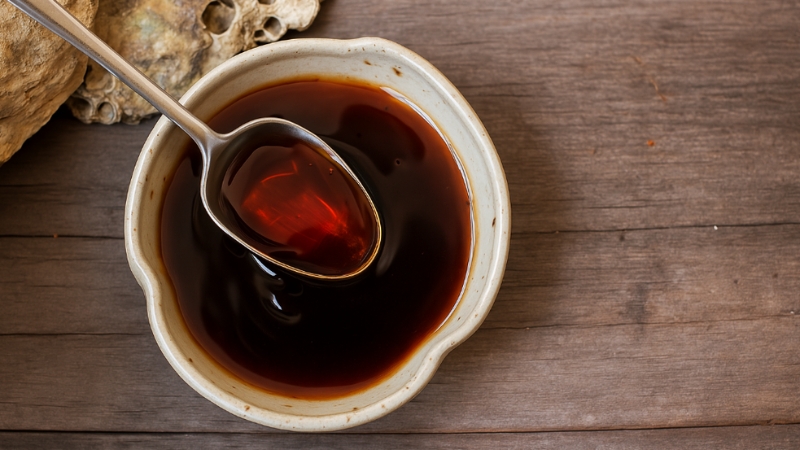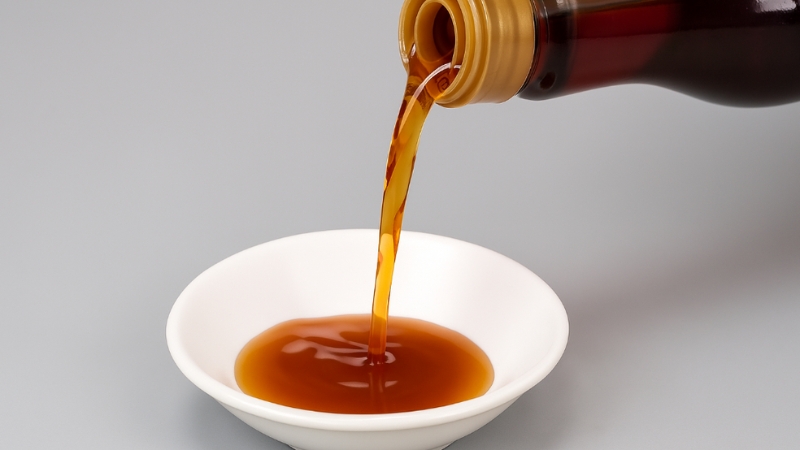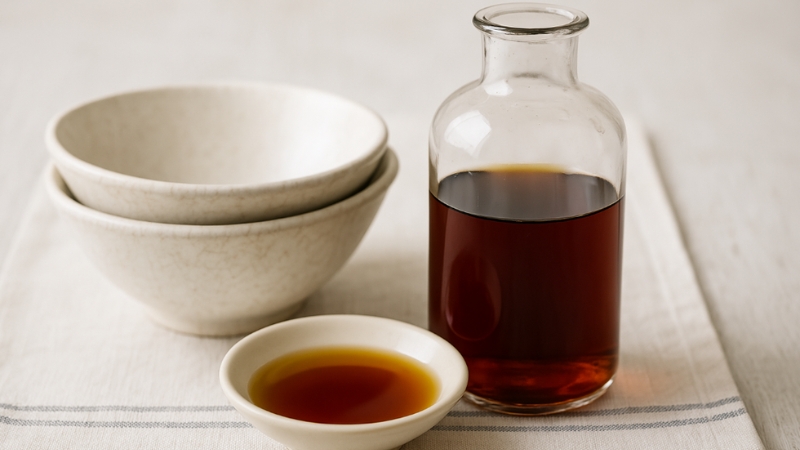Let me just say it outright: fish sauce wins the umami showdown. If we’re talking about sheer, raw, unfiltered umami power—the kind that slaps your taste buds awake and leaves you wondering what kind of culinary sorcery just happened—fish sauce is the clear champion.
But that doesn’t mean oyster sauce isn’t holding its own. In fact, the real story is more interesting than just crowning a winner.
And I should know—because I’ve ruined and redeemed my fair share of meals with both.
Why I Nearly Quit Cooking
View this post on Instagram
I remember the first time I opened a bottle of fish sauce. It was in a tiny apartment kitchen during my “I’m-going-to-learn-to-cook-Thai-food-from-scratch” phase. I’d just bought a bottle of Nam Pla from an Asian grocery store, and I was following a recipe for pad kra pao.
When I twisted off that cap, the smell hit me like a punch in the nose. My roommate literally asked, “Did something die?”
It was funky. Fermented. Oceanic. And honestly, I questioned all my life choices.
But I kept going. I stirred it into the pan, along with chilies, garlic, and holy basil. And then I took a bite.
I kid you not, it was like someone turned the flavor dial up to eleven. That strange, smelly brown liquid? Suddenly, it was everything—salty, savory, deep, rich. My taste buds were doing backflips.
That was the day I understood umami.
So, What Even Is Umami?
Umami is the fifth taste—alongside sweet, salty, bitter, and sour. It’s that mouth-coating, savory, “meaty” flavor you get from things like Parmesan cheese, mushrooms, soy sauce, and yes, fermented fish.
It comes from naturally occurring glutamates and nucleotides, which amplify taste in a deep, almost primal way. Your body craves umami. It’s hardwired.
And fish sauce is basically a bottle of liquid umami.
It’s made by packing small fish (usually anchovies) with salt and letting them ferment over months, sometimes years. The fish breaks down, and their essence is extracted into a thin, intensely flavored sauce that’s salty, savory, and packed with glutamates.
Oyster Sauce: The Gentle Giant

Now, let’s talk about oyster sauce. My relationship with this one started way earlier.
I grew up watching my aunt cook Chinese food in a wok so seasoned it could probably tell stories. She’d throw in chopped garlic, quick-fry some gai lan (Chinese broccoli), and then hit it with a spoonful of thick, glossy oyster sauce.
The smell wasn’t sharp like fish sauce. It was mellow. Sweet, even. When she tossed it all together, the greens would glisten and the flavor was rich—smooth and savory, but softer, rounder.
That’s the thing with oyster sauce. It’s not loud. It doesn’t shout. It hugs your food. It brings balance and sweetness, not that slap-in-the-face funk.
It’s made by simmering oysters (or more often, oyster extract) with sugar, salt, sometimes soy sauce, and thickening agents like cornstarch.
Head-to-Head: The Flavor Face-Off
Feature
Fish Sauce
Oyster Sauce
Texture
Thin, watery, almost like soy sauce
Thick, glossy, syrup-like
Flavor
Salty, sharp, intensely savory, with a deep fermented funk
Sweet, smooth, mellow, with a rich umami depth and a touch of earthiness
Umami Level
Very high – loaded with natural glutamates from fermented fish
Moderate – present, but softened by sugar and starch
Smell
Strong, pungent, fishy in the rawest, most real way
Mild, slightly sweet, almost caramelized with a light seafood hint
Common Uses
Southeast Asian cuisine – Thai, Vietnamese, Filipino; great in soups, dipping sauces, marinades
Chinese cooking – stir-fries, noodles, glazes for meats and veggies
Let’s talk impact.
Fish sauce doesn’t whisper—it shouts. It’s bold, aggressive, and unfiltered. It doesn’t care if you’re ready or not. One extra splash can take your dish from perfect to borderline inedible.
But when used right? Oh, man. It unlocks flavor like nothing else. It’s what makes a papaya salad zing, or gives Thai curries their savory backbone. It’s funky, sure, but it’s also full of life.
Now oyster sauce, on the other hand, is more like the wise older sibling. It’s smooth, and subtle, and knows how to carry a dish without stealing the spotlight. It doesn’t hit your nose like fish sauce does.
@theasiantestkitchen Episode: Bad names, great taste! What do y’all want to see next? Fish sauce = nuoc nam, Oyster sauce = dau hao #fishsauce #learnontiktok #vietnamese ♬ Buy Dirt – Jordan Davis
Instead, it glides in with a dark, glossy body and layers your food in this silky, sweet-savory glaze. It’s the sauce you turn to when you want comfort and consistency. Think of it as your stir-fry’s soul.
They serve different roles, but that’s exactly why they’re both so indispensable.
The fish sauce brings the punch. Oyster sauce brings the polish.
You can’t really swap one for the other, but use them together? That’s flavor synergy. That’s when the magic happens.
Can You Swap One for the Other?
Technically? No. Practically? Sometimes.
They don’t taste alike, and they don’t behave the same in a dish. I’ve tried using fish sauce in place of oyster sauce in a broccoli beef stir-fry, and it tasted like I dropped seaweed into soy sauce. Not the vibe.
But sometimes I use both—especially when making things like stir-fried noodles. A splash of fish sauce for the salt and funk, and a spoonful of oyster sauce for body and sweetness? That’s harmony. That’s how you build layers.
The Final Scoop: Which One Should You Grab First?

If you’re asking which one delivers more umami, fish sauce wins. No contest. It’s stronger, funkier, and higher in glutamates. It’s the essence of fermentation, distilled into a bottle.
But if you’re cooking Chinese stir-fries or want that signature glossy, sweet-savory finish, oyster sauce is indispensable. It’s the more refined sibling—less in-your-face, but just as essential.
For me? My pantry always has both. Because flavor isn’t a competition—it’s a conversation. Sometimes you need a whisper. Sometimes you need a roar.
Final Thought
Cooking is alchemy. And sauces like these are your magic potions.
When you understand what each does—how they smell, how they taste, how they transform your dish—you start cooking not just with your hands, but with your whole gut and soul.
So next time you’re at the store and wondering which bottle to buy—just get both.
Trust me.
